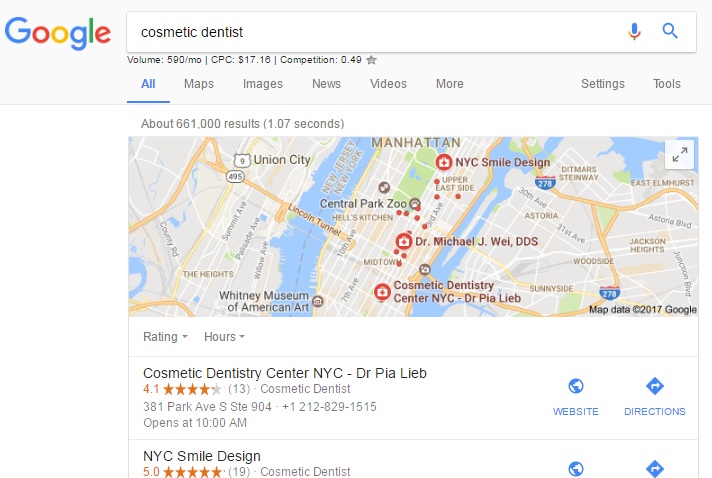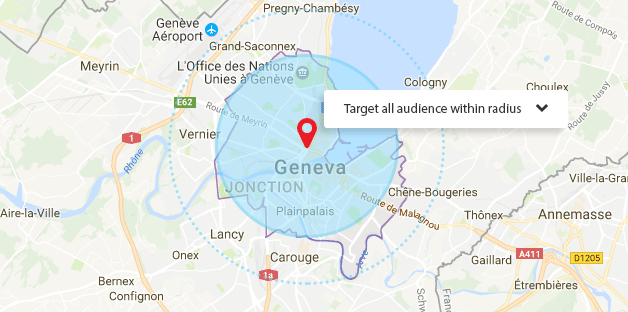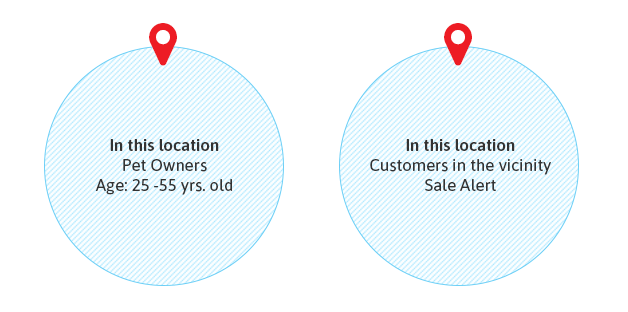
- The Importance Of Rank Tracking Local Keywords In 2018 - June 5, 2018
- How to Spot Opportunities from your Competitors’ Backlinks - July 19, 2017
- Why You Should Monitor Your Brand Daily - May 26, 2017
Google search used to have a standardized approach: people would search for something they need, and the search engine would serve the results depending on the keywords used by websites all over the internet. This resulted in a similar search engine results page for anyone, regardless of location. This has changed through the years, though. Now, two people searching for the same keyword will see different results if they are in different locations.
Location-based targeting is now the current standard. There is no need to type “pizza places New York” if you are in New York. While many people still include locations in queries to ensure the results they get are relevant to them, Google is wise enough to display search results based on your current location.

There are two kinds of location-based targeting techniques, and they work in the following manner:
Geo-Targeting: Personalized Content for Your Location
Geo-targeting is the more popularly discussed location-based marketing strategy because it offers a bit of flexibility. Through this strategy, digital marketers can target a specific subset of their target audience in an area. For instance, once your phone detects that you are in a certain location, they may start alerting you about promos from businesses or events in the area.
In Facebook’s guide, the social media platform mentions that advertisers have several options when selecting who to geo-target:
- Everyone in the location
- Everyone who lives in the location
- Everyone who has recently been in the location
- Everyone traveling to the location
The location can be as specific as a zip code or as general as a country. Aside from targeting a specific area, Facebook’s geo-targeted ads may also be shown only to a specified region. You can advertise:
- Worldwide
- To free trade areas only
- To specified regions (e.g., Asia)
- To more specific locations (e.g., countries with iTunes stores)
Geo-Fencing: For Everyone in a Specific Area
While geo-targeting offers flexibility, geo-fencing offers accuracy. Your ad can be displayed for everyone in the “fence” or area specified. Unlike geo-targeting, geo-fencing may not exclude a certain audience demographic, aiming instead to target everyone in your chosen location. This works for advertisers or website owners who want to target everyone, regardless of age or social status.

As an example, stores may use geo-fencing to send out email blasts about their latest promos as soon as you are within range of their store. The success rate is high, too — with an open rate of 25-30%. To get the most of this marketing strategy, inform your Apple iPhone users to set their geo-fence reminders, so they won’t miss any offers from your brand when they are near any store.
Elle Magazine is one of the websites that benefitted from geo-fencing. Combined with low-powered transmitters called beacons, geo-fencing helped Elle celebrate their 30th anniversary by offering customers their top picks. According to Beaconstac.com, “Any consumer who had opted in for push notifications via ShopAdvisor was notified when he/she was near a retail store selling a product suggested by Elle, using geofence technology.”
Elle Magazine used a combination of geo-fencing and beacons to make their marketing strategy effective. Customers who were near a store selling Elle’s suggested product received a push notification through geo-fencing. If they decide to visit the store, a beacon alerted of their presence sends them a coupon code for the purchase. Other businesses like GameStop and Woolworths also used the same combination to increase their marketing reach.
Location-based Marketing: Making It Work
When it comes to choosing between geo-targeting and geofencing, which one should you use?
It depends on several factors. Depending on the technology you want to use, and the specificity of the demographics you want to target, you can choose one or the other. Both options may use push notifications to alert the users of your ads, but geo-targeting fetches a user’s location through their device’s IP address. Geo-fencing, on the other hand, uses GPS and Wi-Fi.
Geo-targeting works if you have a specialized group of potential customers in mind. For example, a pet shop might get more exposure by geo-targeting pet owners between the ages 25 and 55 years old, and are within their target location. Geo-fencing might be a better option for a grocery store to alert everyone in the vicinity of their branch if they have any sale going on.

What’s left for you to do now is to determine your target audience. If you want everyone in a specific location to be a customer, use geo-fencing. If you want to exclude anyone or narrow down your target audience, go for geo-targeting.
When Google decided to serve location-based search results, they had one thing in mind: convenience. Your strategy will be more effective if you focus on relevancy for those your target audience, and that includes their location.


